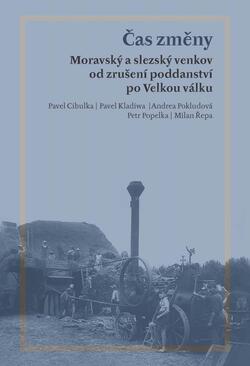A Time of Change. The Moravian and Silesian Countryside from the Abolition of Servitude to the Great War
 Year of publication:
2021
Year of publication:
2021
 Publisher:
Masarykův ústav a Archiv / Ostravská univerzita / Historický ústav
Publisher:
Masarykův ústav a Archiv / Ostravská univerzita / Historický ústav
 ISBN:
978-80-88304-47-0; 978-80-7599-225-3; 978-80-7286-369-3
ISBN:
978-80-88304-47-0; 978-80-7599-225-3; 978-80-7286-369-3

The main aim of the book is to trace and evaluate the communication and organisational structures that had established the civil, modernising and national discourse in the rural milieu. The book is the result of a three-year project called The Transformation and Social Activation of the Rural Milieu in Moravia and Austrian Silesia in 1861–1914, which received the support of the Grant Agency of the Czech Republic. In the project we sought the most comprehensive analysis of life in the rural milieu in ten judicial districts in Moravia and two in Austrian Silesia (alphabetically: the Jablunkov, Jaroslavice, Místek, Příbor, Skočov, Uherský Brod, Uherské Hradiště, Uničov, Valašské Meziříčí, Velké Meziříčí, Vsetín and Zábřeh districts). In each one we collected information for the seat of the district and primarily for three selected villages. The selected districts cover a range from fertile agricultural areas and hilly areas to submontane clearing agriculture with sheep farming, the selected villages varied both in size (the smallest had only 200 inhabitants, the largest five thousand more) and in the structure of the population’s livelihood (in some, agriculture was completely predominant, from some a considerable part of the population went to work in the nearby factories, while some had important industrial enterprises directly in their land register). We examined the issue of the countryside in the context of entire rural districts, as we see the seats of judicial and political districts as the key channels, as the forerunners bringing social change to villages. In these rural towns, local newspapers began to be published, they were the seats of the oldest economic cooperatives and credit unions, associational life was spreading from them, and they also housed the lowest instances of state authorities, which used their regulations to send out important modernisation impulses (education, infrastructure, etc.).


